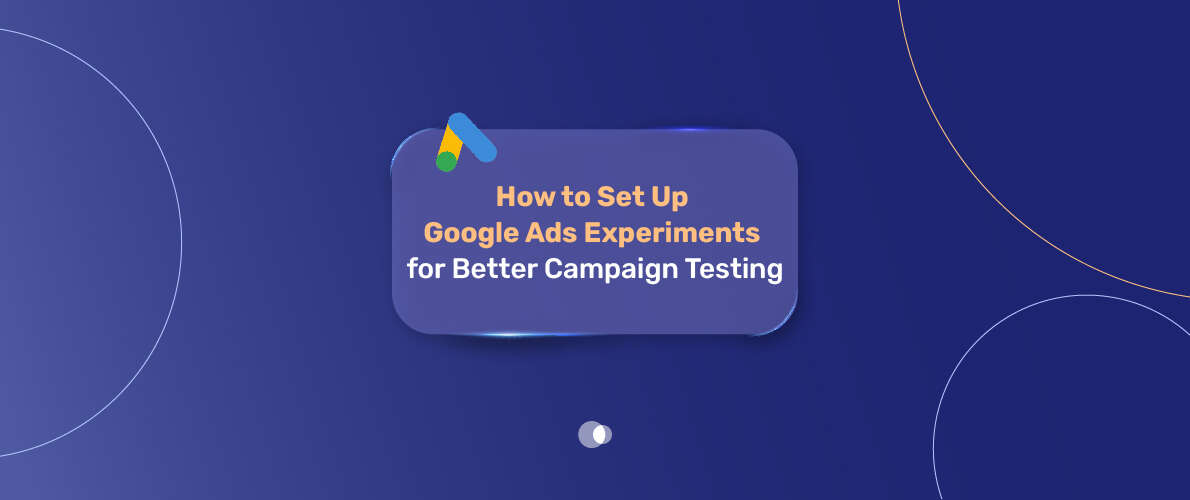Want to boost your Google Ads campaigns without risking what’s already working? Google Ads Experiments let you test new ideas safely, like trying a new ingredient in a recipe before serving it to guests. If you’re unsure where to start, a trusted Google Ads company in Dubai can help you set up and manage experiments for smarter, data-driven results.
Table of Contents
This step-by-step guide will show you how to set up, run, and analyze experiments to optimize your ads. Whether you’re a beginner or a seasoned marketer, you’ll find clear instructions, practical tips, and visual aids to make testing a breeze — especially if you’re working with a professional google ads management UAE partner to get the most out of your campaigns.
Why Use Google Ads Experiments?
Google Ads Experiments are like a sandbox for your campaigns. They let you test changes—new ad copy, different bids, or audience targeting—without messing up your live ads. By running an experiment, you compare the original campaign (the control) against a modified version (the test) to see which performs better. It’s like tasting two versions of a smoothie to pick the tastiest one.
Testing helps you:
- Increase clicks: Find ad text that grabs attention.
- Boost conversions: Discover strategies that drive sales or sign-ups.
- Save money: Identify cost-effective bidding options.
- Learn what works: Use data to make smarter decisions.
Whether you’re tweaking Search, Display, or Shopping campaigns, experiments give you confidence to optimize without guesswork — especially when supported by expert Google Ads optimization services UAE businesses rely on for consistent results.
What Can You Test in Google Ads?
You can experiment with almost any campaign element. Here are some popular ideas:
| Test Type | Example | Goal |
| Ad Copy | New headline: “Shop Now!” vs. “Buy Today!” | Increase click-through rate (CTR). |
| Bidding Strategies | Manual CPC vs. Target CPA | Lower cost per conversion. |
| Keywords | Broad match vs. phrase match | Improve ad relevance. |
| Audiences | In-market vs. affinity audiences | Target better customers. |
| Product Titles (Shopping) | “Blue Sneakers” vs. “Men’s Running Shoes” | Boost clicks on Shopping ads. |
Most experiments work for Search and Display campaigns directly in Google Ads. For Shopping campaigns, testing product titles or images often requires external tools like DataFeedWatch, which we’ll cover later.
Benefits of A/B Testing with Experiments
A/B testing, a core part of Google Ads Experiments, compares two versions of something to find the winner. Here’s why it’s awesome:
- Low risk: Your original campaign keeps running, so there’s no downtime.
- Data-driven: Results show what actually works, not just what you think might.
- Flexible: Test small tweaks (like ad text) or big changes (like bidding strategies).
- Fair comparison: Experiments run both versions at the same time, so things like holidays or trends don’t skew results.
Think of A/B testing as trying two outfits for a party—you wear one, your friend wears the other, and you see who gets more compliments.
Step-by-Step Guide to Running Google Ads Experiments
Ready to start? Follow these steps to set up and analyze your first experiment. Each step includes a visual to guide you.
Step 1: Access the Experiments Tab
Log into your Google Ads agency account. On the left sidebar, find the “Experiments” tab. It’s usually listed under “Drafts & Experiments,” but you might need to click “More” to see it. Click “Experiments” to open the testing hub, where you’ll create and manage your tests.
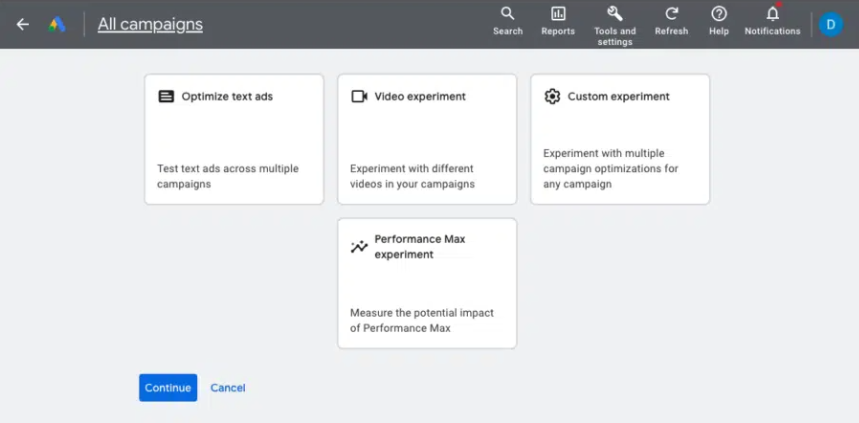
Step 2: Set Up a Campaign Draft
A campaign draft is a copy of your live campaign where you can make changes safely. To create one:
- Go to “Drafts & Experiments” in the sidebar.
- Click “Campaign Drafts,” then select “+ New Draft.”
- Choose the campaign you want to test (e.g., your main Search campaign).
- Name your draft something clear, like “Test Ad Copy May 2025.”
This draft is your testing ground, like a sketchbook for new ideas.
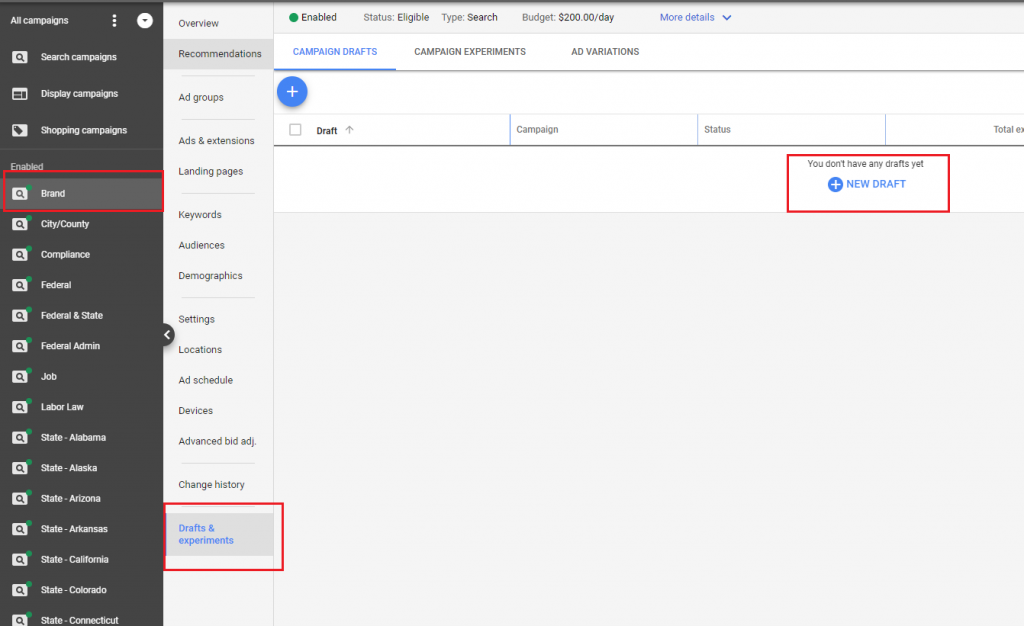
Step 3: Modify Your Draft
Now, make one change to test. For example:
- Ad copy: Write a new headline, like “Get 20% Off Today!” instead of “Shop Our Sale.”
- Bidding strategy: Switch from manual bidding to “Maximize Conversions.”
- Audience: Add a new group, like “Tech Enthusiasts.”
Stick to one change to know what’s driving results. It’s like adjusting only the salt in a dish to see if it tastes better.
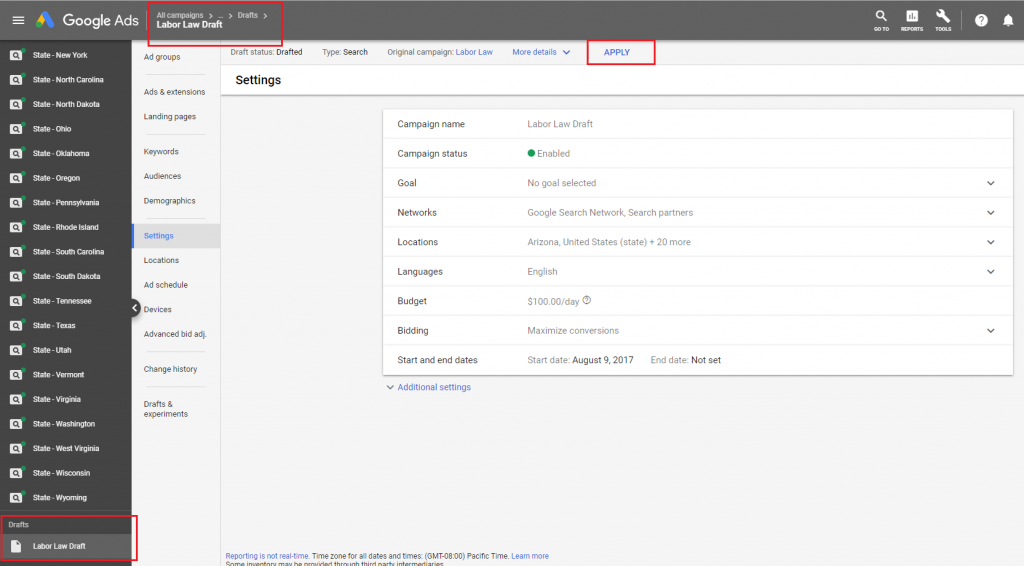
Step 4: Create the Experiment
Turn your draft into an experiment:
- Go to “Campaign Experiments” under the Experiments tab.
- Click “+ New Experiment” and select your draft.
- Name the experiment (e.g., “Ad Copy Test May 2025”).
- Set the traffic split—how much audience goes to the test vs. original. A 50/50 split is common.
- Choose start and end dates. A 2–4 week test usually gives enough data.
The traffic split ensures some users see the original campaign while others see the test, creating a fair comparison.
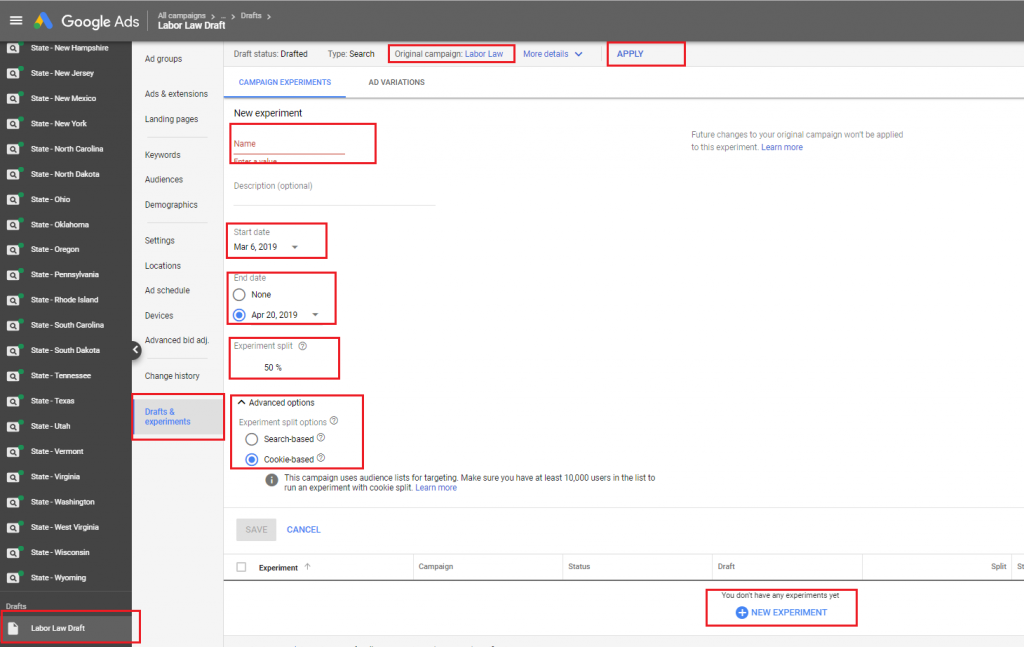
Step 5: Launch and Monitor
Click “Apply” to start the experiment. Google Ads runs both campaigns simultaneously, so external factors (like a holiday sale) affect both equally. Check the Experiments page weekly to track progress. You’ll see early data on clicks, impressions, and conversions.
Don’t stop the experiment early, even if one version looks better—wait for statistical significance to ensure reliable results. It’s like waiting for a cake to bake fully before tasting it.
When the experiment ends, visit the Experiments page to compare the control and test campaigns. Focus on key metrics:

Step 6: Analyze Results
- Clicks: Did the test get more attention?
- Conversions: Did more people take action (e.g., buy or sign up)?
- Cost per conversion: Was the test more cost-effective?
Google Ads highlights if results are statistically significant, meaning they’re not just luck. If the test wins, apply it to your main campaign or replace the original. If it loses, keep the original and try a new test.
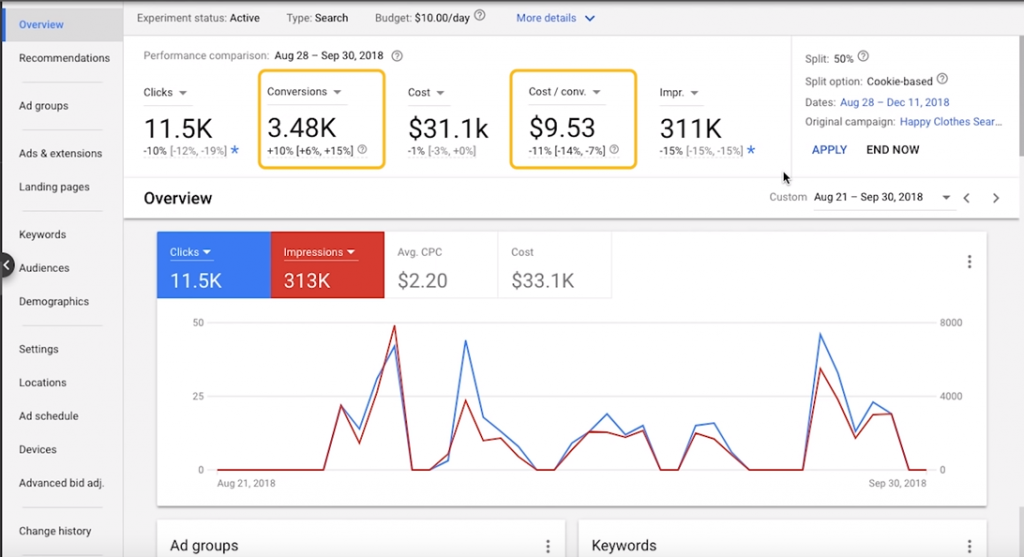
Testing Product Titles for Shopping Campaigns
Shopping campaigns don’t support direct experiments in Google Ads, but you can test product titles or images using tools like DataFeedWatch. Better titles can skyrocket your click-through rate (CTR). Here’s how:
- In DataFeedWatch, map the “ID” field in your product feed.
- Open the feed’s mapping panel and find the A/B test option for titles.
- Create two versions (e.g., “Blue Running Shoes” vs. “Men’s Lightweight Sneakers”).
- Run the test and compare CTR or conversions for each title.
For example, a descriptive title like “Waterproof Men’s Hiking Boots” might outperform a vague one like “Hiking Shoes.”
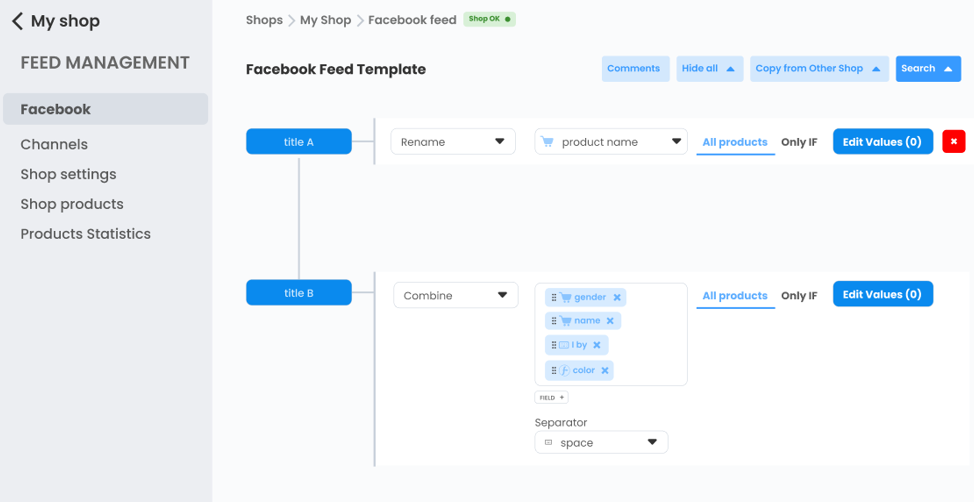
Advanced Tips for Ad Optimization
Want to level up your experiments? Try these:
- Test big changes: Experiment with a completely new bidding strategy, like switching from manual to automated.
- Use conversion tracking: Ensure your account tracks actions like purchases or form submissions to measure real impact.
- Run multiple experiments: Test different campaigns or elements (e.g., ad copy in one, keywords in another) to learn faster.
- Name clearly: Use names like “Bidding Test June 2025” to stay organized.
- Check external factors: If a competitor launches a big sale, it might affect your results, so note it.
Common Mistakes to Avoid
| Mistake | Why It’s Bad | How to Fix |
| Testing too many changes | Hard to know what caused the result. | Test one variable at a time. |
| Stopping experiments early | Results may not be reliable. | Run for 2–4 weeks for statistical significance. |
| Ignoring conversion tracking | Clicks don’t show the full picture. | Set up conversion tracking before testing. |
| Using vague experiment names | Causes confusion later. | Use descriptive names with dates. |
Conclusion
Google Ads Experiments are your secret weapon for ad optimization. By testing changes like ad copy, bidding strategies, or product titles, you can find what drives clicks and conversions without risking your budget. This guide walked you through setting up drafts, launching experiments, and analyzing results with clear steps and visuals.
Start small—maybe test a new headline—and build confidence to try bigger ideas. With practice, you’ll turn your campaigns into high-performing machines. Ready to experiment? Log into Google Ads and give it a shot!
FAQs
How long should a Google Ads Experiment run?
Run experiments for 2–4 weeks to collect enough data for statistical significance. Short tests may give unreliable results.
Can I test multiple changes in one experiment?
It’s best to test one change (e.g., ad copy) to know what’s working. Multiple changes make it hard to pinpoint the cause.
Do Google Ads Experiments cost extra?
No, experiments use your existing campaign budget. The traffic split divides your spend between the control and test.
Can I run experiments for Shopping campaigns?
Google Ads doesn’t support direct experiments for Shopping, but tools like DataFeedWatch let you test product titles or images.
What if my experiment fails?
No worries! Keep your original campaign running and try a new test. Experiments are low-risk ways to learn.


